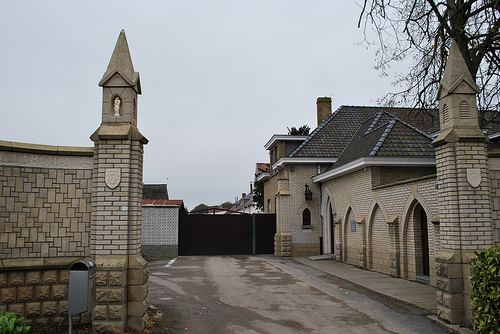It’s not easy to buy a case of Westvleteren 12, the world’s most prized beer (and according to many experts, the world’s best-tasting). It costs only 28 Euros but it doesn’t matter how much money you have. You could have your own oil-rich principality in Middle East or a few million shares of Google stock and the brewers of Westvleteren wouldn’t ship any to you.
The brewers of Westvleteren are actually a group of Trappist monks from the St. Sixtus Abbey in Westvleteren, Belgium. And they don’t give a shit how bad you want their beer.
St. Sixtus is one of six Trappist breweries left in the world. The monks of this order have traditionally brewed beer (and sold other foods like mustard and cheeses) to support themselves. The other five Trappist breweries — Chimay, Orval, Rochefort, Westmalle, Achel and De Koningshoeven — can all be found on the shelves of your local store. Chimay, in particular, has long been highly commercialized. These breweries generally hire non-monks to handle their operations and their beers are sent around the world. Japan and the U.S. are two of their best customers.
But St. Sixtus is different.
St. Sixtus brews three beers: Blonde, 8 and 12. Even by the incredibly high standards of Trappist beers, Westvleteren 12 is special. Beer geeks basically lose their shit over getting their hands on a bottle of the liquid specialness that is the 12.
There had long been a policy of only allowing sales of the beer at the brewery itself. No international networks of distributors would be involved. At least not legitimately.
Westvleteren’s reputation has skyrocketed in the age of internet beer review sites like Beer Advocate and RateBeer. As word got out about the beers coming from a tiny abbey in a tiny town in a tiny country, St. Sixtus began to resemble a besieged castle. The brewery has never advertised its products and the brothers have repeatedly said that they’re only interested in selling enough beer to support their monastery.
They monks have consistently made their beer harder and harder to get in recent years. From Wikipedia:
Buyers were originally limited to ten 24-bottle crates of the beer per car, but as the beer increased in popularity, this was first reduced to five, then to two. For the Westvleteren 12 in 2009, it was limited to one case. When making an order now, the type and quantity of beer available for sale are revealed. Sales are limited to one order a month per person per license plate and phone number. Also, the beer must be reserved on their “beerphone” beforehand. The monks do not sell beer to individuals who drive up to the abbey hoping to purchase beer. The reason for this is to eliminate commercial reselling, and hence give all visitors a chance to purchase the product.
The current production is 4750 hl (60,000 cases) per year, and has remained the same since 1946.
Curtailing sales to one case per visitor per month has not tamped down the demand for Westvleteren one bit. The beer is, in fact, as sought after as ever. The brewery has traditionally not really been open to visitors and every bit of news from St. Sixtus gets gulped down by the world’s beer afficianadoes.
The truth is that the monks of St. Sixtus simply don’t care how much we love their beers. For them, the beer is a means to an end. They simply have no capitalistic conception of empire-building and aren’t really interested in increasing the number of people who get to savor a bottle of the 12. That approach to brewing has created a huge gray market in re-sold bottles of Westvleteren, which goes against the wishes of the monks, who ask that buyers not re-sell the beers. But people do anyway.
And that’s a shame. There are hundreds of great beers produced in Belgium that are great on their own. (I’ve never had Westvleteren so I can’t speak to that. I’m going more on reputation and the fact that a few other brewers in Belgium share access to very similar yeast strains.) In fact, beers from Rochefort, Westmalle and St. Bernardus supposedly share a lot of the same complex flavors.
So are we loving Westvleteren to death?
Stan Hieronymous, an expert on Belgian brewing, has long been cynical about the temptation of beer geeks to do just about anything to get their hands on the elixir.
In cruising through discussion boards I saw it suggested, and I’m paraphrasing, that “the monks should brew more beer to raise more money for the poor.” How come nobody finishes that sentence with what they are really thinking? “. . . and make it easier for me to buy their beer.”
In fact, larger monastery breweries, notably Westmalles and Chimay, help support other monasteries, multiple charities and local economies. Chimay, with 150 employees in its brewery and cheese making facility, is one of the largest employers in one of Belgium’s poorest regions. Westvleteren sells its beer in wooden crates (pictured at the top) manufactured in a “shielded workplace” for those not able to work in a mainstream environment.
But that’s not why they brew. Monks — Benedictine, Cistercian and Trappist — live by the rule of Saint Benedict, written about A.D. 530.Among other things, it calls on monks to be self-sufficient through their own labor.
Brother Joris puts it quite well: “We live on brewing, but we do it so we can continue with our real business, which is being monks.”
Photos via Flickr.

